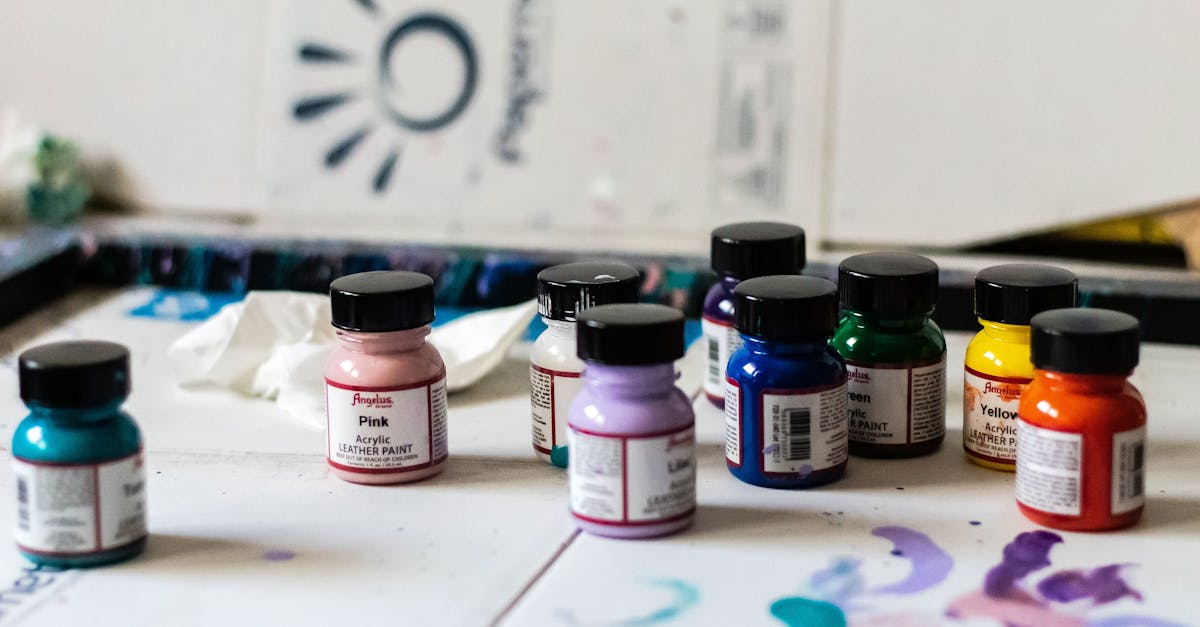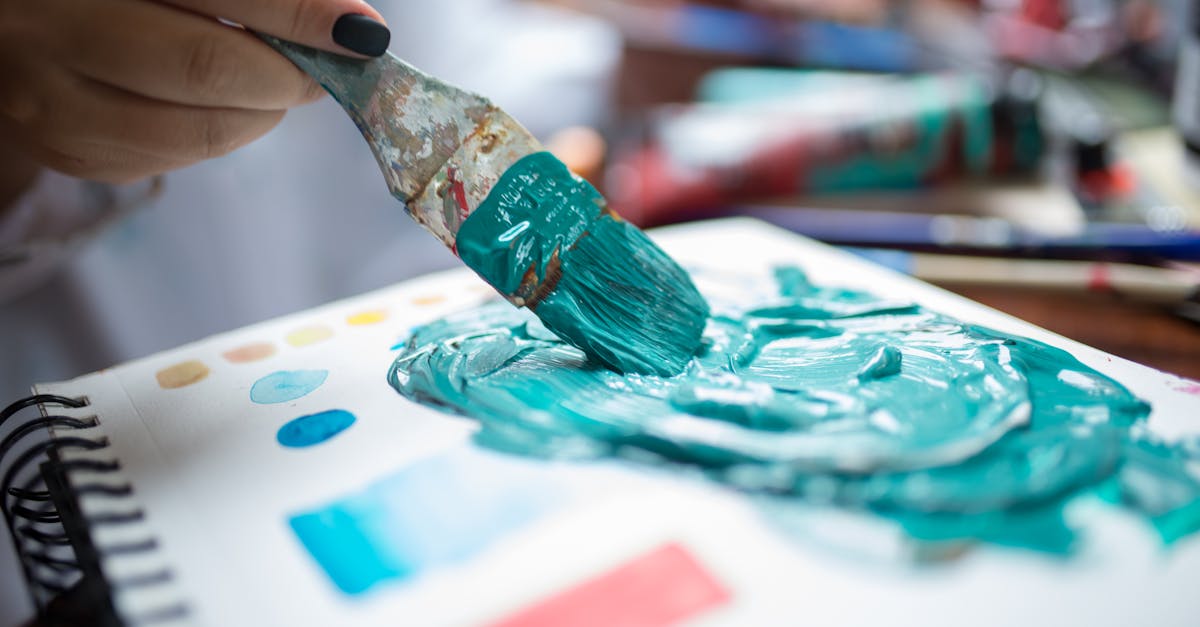This article offers essential tips on choosing the best paint for various surfaces. It emphasizes the importance of considering the specific surface material and selecting the appropriate paint type for optimal adhesion. Different surface finishes, such as flat, satin, and gloss, cater to different needs and areas in the home. The article also discusses functionality, suggesting moisture-resistant and easy-to-clean paints for high-traffic or damp areas like kitchens and bathrooms. Lastly, it encourages testing paint samples and researching reviews to ensure quality before making a purchase.
Current Trends in House Painting and Remodeling
In today’s world, enhancing living spaces through painting and remodeling has become a popular journey for homeowners. Whether a cozy corner or a large open space, the right colors and designs can completely transform the ambiance of a home. However, choosing the right color palette, finish, and materials is crucial for achieving a stunning and long-lasting result. With a myriad of options available in the market, it’s essential to be informed about the latest trends and techniques that can elevate any home improvement project.
From vibrant hues that evoke warmth to subtle tones that create a calming atmosphere, understanding current trends in house painting can empower homeowners to make informed choices. Additionally, learning about innovative application techniques and high-quality materials can ensure your renovations stand the test of time. This guide will explore how to choose the right paint based on various surfaces and recommend strategies to achieve professional results, whether you’re looking to enhance your interior spaces or revamp your exterior appeal.

| Surface Type | Recommended Paint |
|---|---|
| Interior Walls | Use latex paint for easy cleanup and durability. |
| Ceilings | Opt for flat white ceiling paint to minimize roller marks. |
| Wood Surfaces | Choose semi-gloss latex paint after priming for the best finish. |
| Metal Surfaces | Use oil-based primer followed by latex or oil-based paint. |
| Masonry | Select acrylic latex paint specifically formulated for masonry. |
| Floors | Pick floor paint designed to withstand heavy traffic and spills. |
| Bathrooms | Utilize semi-gloss latex paint for moisture resistance and durability. |
| Kitchens | For high humidity, choose anti-grease paint for longevity. |
«`html
Current Trends in Home Painting and Remodeling
When it comes to enhancing the look and feel of a home, painting and remodeling offer some of the most impactful opportunities. Whether it’s a complete overhaul of a living space or a fresh coat of paint in a subtle shade, understanding current trends is crucial for homeowners who want to create inviting and aesthetically pleasing environments. This guide covers the most popular colors, effective application techniques, and innovative materials that are gaining traction in the market.
Choosing the Right Paint Color
The very first question that comes to mind when considering a new paint job often revolves around color selection. The array of options can be overwhelming; however, contextualizing the choice within current trends can help streamline the decision-making process.
Popular Color Palettes
In 2023, a notable shift is observed in home color palettes. Instead of stark whites and muted neutrals, homeowners are gravitating toward warmer tones that evoke feelings of comfort and approachability.
- Earth Tones: Soft browns, rich ochres, and muted greens are rising in popularity, bringing a natural feel indoors.
- Jewel Tones: Colors like deep teal, emerald green, and royal blue add a touch of elegance and sophistication to spaces.
- Pale Pastels: Soft blush pinks, light mint greens, and gentle lavenders are making a comeback, particularly in children’s rooms and bathrooms.
Choosing a color that resonates with personal style while still being on-trend can add tremendous value to a home.
Using Color to Enhance Spaces
Beyond aesthetics, color can significantly influence the perception of space. For instance:
- Using light colors in smaller rooms can create an illusion of space.
- Accent walls in bold colors can serve as a focal point while keeping the overall vibe from feeling overwhelming.
- In open concept areas, using varying shades can define spaces while maintaining a cohesive look.
The Importance of Paint Finish
While selecting color is essential, the paint finish is equally important. Different finishes lend different qualities to paint, affecting durability and appearance.
Types of Paint Finishes
- Flat/Matte: Ideal for low-traffic areas such as bedrooms, as they hide imperfections but are more challenging to clean.
- Satin: A bit more durable, satin finishes are well-suited for bathrooms and kitchens, as they’re easier to maintain.
- Semi-Gloss/Gloss: Perfect for moldings and cabinets, these finishes reflect light and are easy to wipe clean, making them ideal for high-traffic areas.
Understanding the right finish based on the room’s functionality ensures that the selected paint will not only look good but last longer.
Application Techniques
To achieve a professional-looking paint job, employing correct application techniques is vital. Whether opting for DIY or working with professionals, knowing how to apply paint can turn a simple project into a stunning transformation.
Preparation is Key
Prior to painting, proper surface preparation ensures optimal adhesion and an even finish. Key steps include:
- Cleaning: Dust and grease must be removed from surfaces to guarantee that the paint sticks adequately.
- Priming: For non-porous surfaces like metal, using a primer helps the paint adhere better and improve color vibrancy.
- Repairing: Filling holes and cracks ensures a smooth surface, preventing surface imperfections from detracting from the final look.
Painting Techniques
Once properly prepared, utilizing the right painting techniques can significantly impact the outcome.
- Cutting In: Use a high-quality angled brush to cut in around edges and corners before rolling the larger areas.
- Rolling: Use a roller for expansive walls to achieve a smooth, uniform finish. Pay attention to the amount of paint on the roller; too much can cause drips.
- Backrolling: After spraying paint on large surfaces, back rolling can help distribute the paint evenly and fill in texture.
Innovative Materials and Techniques
The home painting industry is witnessing new materials that promise to enhance both the durability and features of painted surfaces.
Eco-Friendly Paints
With increasing awareness of environmental issues, many homeowners are opting for eco-friendly paints. These paints are low in volatile organic compounds (VOCs) and are made from natural materials that pose fewer health risks.
Specialty Paints
Specialty paints are designed for specific needs; examples include:
- Mildew-resistant paints: Essential for bathrooms and kitchens, these paints prevent mold growth.
- Anti-graffiti coatings: Ideal for commercial buildings, these can withstand repeated cleaning without damaging the underlying color.
- Chalkboard and magnetic paints: Perfect for playrooms or offices, these allow walls to be functional surfaces.
Tech-Enhanced Painting
The introduction of technology into painting is another trend shaping modern home renovations. Smart paints that change color or finish with temperature variations are starting to be marketed.
Also notable is the use of paint application tools equipped with technology that ensures an even distribution of paint, minimizing waste and improving finish quality.
Consulting the Professionals
When in doubt, consulting professionals is always a sound strategy. Experts can provide invaluable insights related to color trends, paint types, and application techniques that are best suited for specific home environments.
Furthermore, professional painters stay updated on the latest trends, ensuring that they can offer guidance that aligns with the homeowner’s goals and current standards in the industry.
Taking the steps to wisely choose colors, finishes, and application techniques not only ensures a successful painting project but also revitalizes the living space in a way that is both practical and visually appealing.

Transform Your Living Space Today
Ready to elevate your home’s aesthetic? Our expert painting and remodeling services are designed to bring your vision to life, adding beauty and value to your property. Don’t wait any longer – let us help you create the perfect environment!
Current Trends and Tips in Home Painting and Remodeling
Popular Paint Colors
- Earthy Tones: Embrace the warmth of earthy tones such as terracotta, olive green, and sandy beige to create a welcoming atmosphere.
- Bold Accent Walls: Use vibrant colors like deep navy or emerald green for accent walls to add depth and character to any room.
- Soft Pastels: Soft pastel colors are trending for their calming effect, making them ideal for bedrooms and nurseries.
- Monochromatic Schemes: Opt for different shades of a single color to achieve a sophisticated and cohesive look throughout your home.
- Neutral Palettes with a Twist: Incorporate neutral colors complemented by a pop of color through accessories or furniture to maintain a modern aesthetic.
Innovative Painting Techniques
- Strie Technique: This technique mimics the appearance of fabric on walls and provides a texture that adds elegance to any space.
- Color Washing: A technique that creates a soft, layered color effect, ideal for adding depth and visual interest.
- Ombre Styles: Transitioning from one color to another creates a dynamic and playful look, often used in kids’ rooms and creative spaces.
- Stencil Designs: Utilizing stencils can enhance your walls with intricate patterns without the commitment of wallpaper.
Essential Tips for Choosing Paint
- Consider the Surface: Different surfaces require specific types of paint for optimum adherence. For example, use latex paint for drywall and oil-based paint for metal.
- Think About Functionality: Select paints with added features for high-moisture areas such as kitchens and bathrooms, like mold-resistant or easy-clean formulations.
- Try Before You Buy: Utilize paint samples to test colors and finishes in your home lighting before committing to a purchase.
- Read Reviews: Gather insights on paint performance and application from other homeowners and professionals to ensure quality choices.
- Consult Professionals: When in doubt, ask experts for guidance tailored to your specific projects for the best results.
Material Trends in Accessory and Decor Projects
- Sustainable Paints: Eco-friendly paints made from natural ingredients are becoming increasingly popular for environmentally-conscious homeowners.
- Smart Paints: New innovations include paints that can change color or have properties such as self-cleaning capabilities.
- Textured Finishes: Incorporating texture in paint finishes can add a unique touch, creating depth and modern sophistication.
- Concrete and Metallic Finishes: Modern aesthetics are trending towards concrete look paints and metallic accents for a contemporary industrial vibe.
Frequently asked questions
Glossary of Key Terms Related to Painting and Home Remodeling
- Latex Paint
- A water-based paint that is easy to clean and quick-drying, commonly used for interior walls and ceilings.
- Oil-Based Paint
- A paint made with oil that provides a durable finish, often used for trim and cabinetry due to its stain and scratch resistance.
- Finish
- The sheen level of the paint, ranging from matte (flat) to high-gloss, affecting the appearance and durability of the surface.
- Primer
- A preparatory coating applied before paint to improve adhesion, provide a uniform surface, and enhance durability.
- Moisture-Resistant Paint
- A type of paint designed to withstand humidity, making it ideal for bathrooms and kitchens to prevent mold and mildew growth.
- Trim
- The finishing material such as moldings, baseboards, and casings, often painted with semi-gloss or high-gloss finishes for durability and aesthetic appeal.
- High-Traffic Areas
- Regions of a home that experience frequent use, like hallways and kitchens, requiring more durable paint finishes for easy cleaning.
- Sampling
- The process of testing paint colors and finishes on a small area before committing to a full application to ensure satisfaction with the selected option.
- Sheen
- The level of gloss or shine in paint, which can affect both the aesthetic and maintenance of the painted surface.
- Masonry Paint
- A specialized paint formulated for use on brick, stone, or concrete surfaces, providing adhesion and protection against moisture.
The process of choosing the best paint for every surface is essential in ensuring that your home renovations are both visually appealing and effective. By understanding the characteristics of different surfaces—such as latex paint for walls and ceilings, oil-based paints for metal, and specialized acrylic latex for masonry—you can select the appropriate paint type and finish. This ensures durability, ease of cleaning, and overall success in your projects. Utilizing paint samples, reading reviews, and consulting professionals will further enhance the outcome of your painting endeavors. Having equipped yourself with this knowledge, it’s time to confidently apply these insights and transform your space!
1. Interior Surfaces
When painting interior surfaces like walls, ceilings, and woodwork, consider the following:
- Use latex paint for a quick-drying and low-odor option.
- For ceilings, choose a flat white ceiling paint to minimize lines and reduce yellowing over time.
- Select an eggshell finish for bedrooms and dining rooms, and a satin finish for high-traffic areas such as hallways.
- For woodwork, always prime bare wood first and opt for a latex paint with a semi-gloss finish for easier cleaning.
2. Metal Surfaces
Metal surfaces require careful treatment to ensure proper adhesion:
- Iron and steel should be primed before application; use either latex or oil-based paint.
- Aluminum and galvanized metal can typically use latex paint without priming.
- Always prime when using oil-based paint on any metal type.
3. Masonry
For masonry surfaces, including fireplaces, proper paint selection is crucial:
- Utilize an acrylic latex paint designed for masonry to ensure durability and adhesion.
4. Flooring
When painting floors, choose specialized products for durability:
- Opt for paint specifically designed for flooring to withstand high traffic and spills.
Transform Your Home with Expert Painting and Remodeling Services
Revitalize your living space with our top-notch painting and remodeling solutions. Enjoy a fresh, vibrant look that enhances your home’s beauty and value. Contact us today for a personalized consultation and let our professionals guide you through the process!
Sophia Torres is the creative mind behind the most dazzling transformations at TS Painting & Restoration. With a strong background in interior design and a deep passion for tropical color palettes, she has helped hundreds of clients revitalize their spaces into vibrant and inviting environments. Born in Colombia and raised in Florida, Sophia brings a unique perspective to her work, blending Latin American influences with modern design trends.
Sophia’s vision of color goes beyond the conventional. She is known for her ability to create bold and unexpected combinations that reflect Florida’s natural beauty. Her focus on color psychology and strategic use of tones allows her to transform any environment, making each project a showcase of her clients’ personal style. On her blog, she shares practical tips on how to choose colors that not only beautify but also enhance emotional well-being and create harmony in the home.
When not working, Sophia enjoys exploring art galleries, experimenting with DIY projects, and finding inspiration in Florida’s lush landscapes. For her, design isn’t just about aesthetics; it’s about creating spaces that tell a story, reflect the identity of those who live there, and evoke positive emotions. At TS Painting & Restoration, Sophia is committed to helping homeowners discover how colors can transform their homes into true havens of tranquility and beauty.


